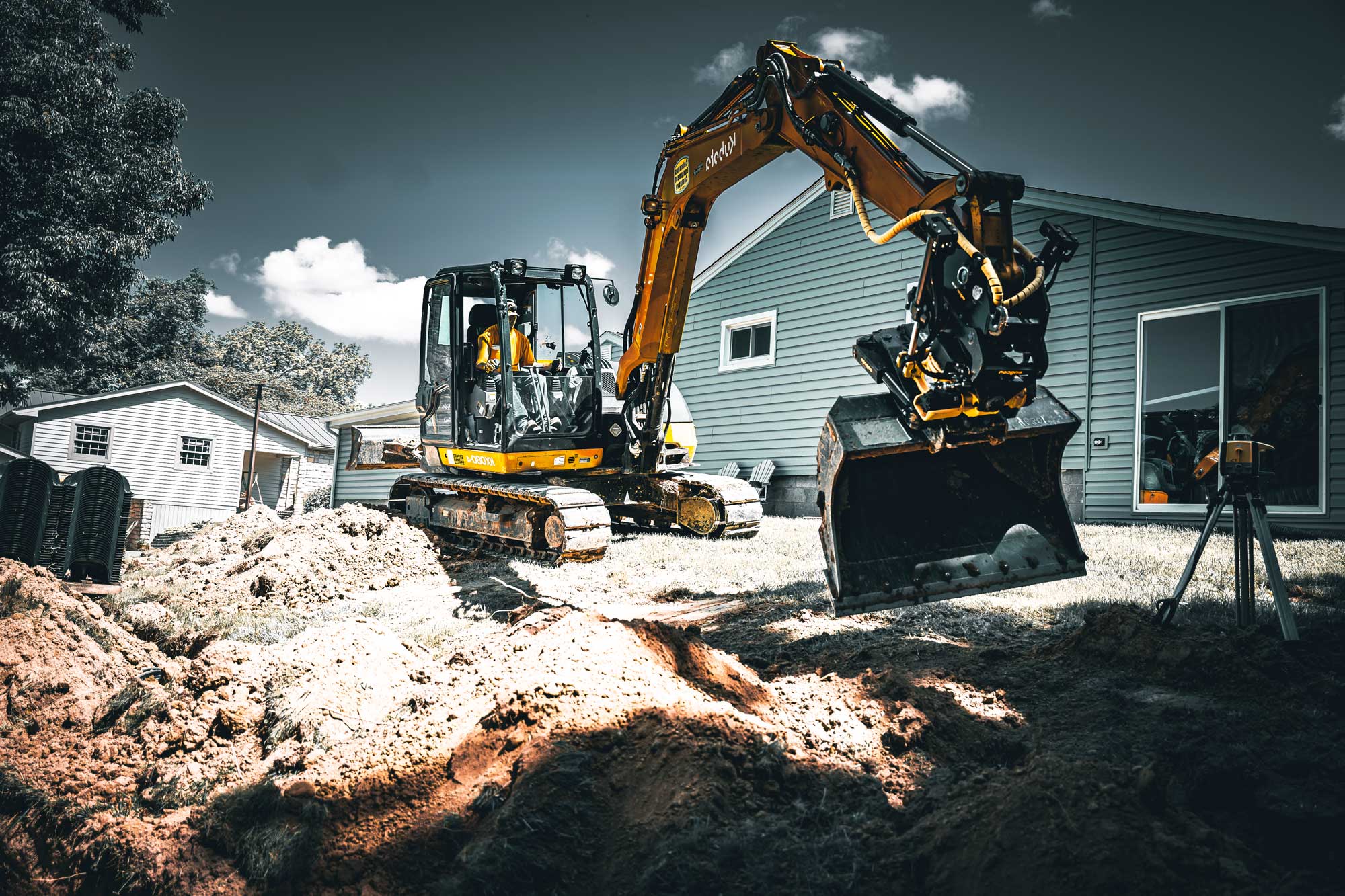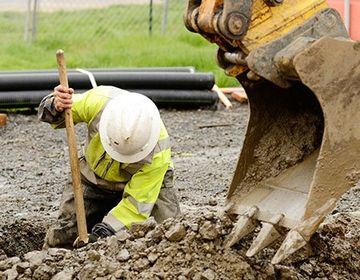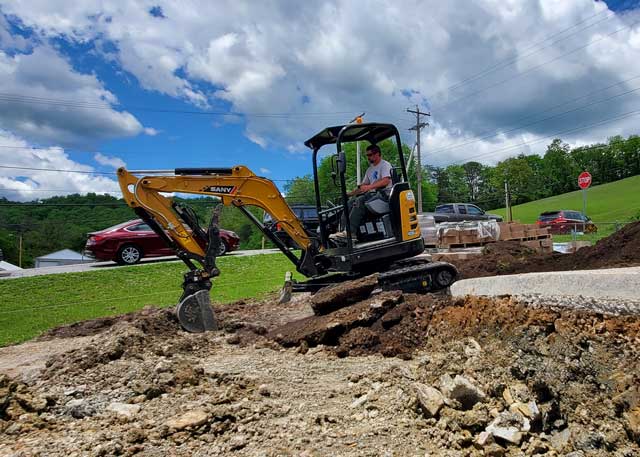Lancaster Trenching - Expert Trenching Solutions in Lancaster, Ohio
Lancaster Trenching - Expert Trenching Solutions in Lancaster, Ohio
Blog Article
Introducing the Art of Excavation: Pro Tips for Safe and Effective Digging
As dirt is turned and earth is moved, the intricacies of excavation disclose themselves, demanding an eager understanding of equipment, soil composition, safety and security procedures, and ecological considerations. The proficiency needed to browse these elements properly can imply the difference in between an effective excavation project and a prospective catastrophe.
Importance of Appropriate Tools
To ensure the safety and effectiveness of any type of excavation project, using the proper devices is extremely important. Excavation projects differ in extent and intricacy, varying from tiny household landscape design work to massive building endeavors.
Excavators are basic items of equipment in any type of excavating procedure. These flexible makers been available in different sizes to match different job needs. Mini excavators are excellent for smaller sized jobs, while bigger excavators tackle more comprehensive jobs effectively. Backhoes are one more essential tools kind, integrating the functions of a loader and an excavator in one equipment. They are useful for tasks requiring convenience and ability to move.
Aside from excavators, various other essential equipment consists of dump bulldozers, trenchers, and vehicles. Dump vehicles are essential for removing and transferring excavated products, while plates are used for digging deep and slim trenches. Excavators succeed in jobs that call for pressing large amounts of soil or particles. By buying the ideal devices, excavation jobs can be completed safely, in a timely manner, and with accuracy.
Comprehending Soil Structure
A comprehensive grasp of dirt make-up is basic for performing excavation jobs with accuracy and safety. Understanding the different types of soil is vital as it straight impacts excavation methods, tools selection, and total project efficiency.
Sand fragments are the largest and supply great drain however use little communication. Silt fragments are smaller sized than sand yet larger than clay, using modest drainage and communication. Clay bits are the smallest and give high communication however bad drainage. Organic issue, such as decomposing plant material, affects soil fertility and stability.
Prior to commencing excavation, conducting dirt examinations to identify its composition and qualities is important. This information helps in picking the appropriate tools, applying safety and security measures, and creating excavation techniques customized to the specific dirt conditions - excavating ohio. By understanding soil make-up, excavation experts can boost project end results while making sure safety and adherence to finest practices
Precaution and Procedures
Comprehending dirt make-up is the foundation upon which precaution and protocols for excavation tasks are built, guaranteeing the health of employees and the success of the endeavor. When it concerns safety and security during excavation, there are a number of vital procedures that should be applied to alleviate threats and protect against mishaps.
Most importantly, before any excavating begins, an extensive examination of the site should be carried out to identify any kind of prospective hazards such as below ground utilities, unpredictable dirt conditions, or nearby structures that could present a risk. It is crucial to have a competent person oversee the excavation process to guarantee that all safety and security methods are followed strictly.
In addition, all workers entailed in the excavation must be correctly educated in secure digging practices and the correct procedure of equipment. By adhering to these security procedures and procedures, excavation projects can be completed successfully and without case.
Efficient Excavation Preparation
When beginning on an excavation job, precise planning is important to make certain effectiveness, safety and security, and successful results. Effective excavation planning involves a number of essential actions that are vital for the smooth execution of the job. The initial step is to conduct a complete website analysis to identify any kind of possible risks, such as below more information ground energies or unstable dirt conditions. This details is vital for establishing a thorough excavation strategy that consists of precaution and run the risk of reduction approaches.
As soon as the site analysis is complete, the next step is to produce a clear timeline and routine for the excavation activities. This consists of determining the series of tasks, tools needs, and manpower allocation. Correct organizing helps stay clear of delays and makes sure that the task remains on track.

Additionally, interaction among all team members is paramount throughout the planning phase. Clear regulations, regular updates, and effective sychronisation are necessary for an effective excavation job. By investing time and initiative in meticulous preparation, excavation teams can significantly boost productivity, decrease risks, and achieve effective outcomes.

Handling Ecological Considerations
With boosting focus on environmental sustainability in building and construction techniques, handling ecological considerations has actually become a crucial element of excavation projects. Excavation tasks have the possible to affect the surrounding setting via dirt disintegration, sediment runoff, environment disturbance, and contamination of water resources. To minimize these risks, it is important to implement ideal techniques that prioritize environmental management.

In addition, proper waste monitoring is essential to stop soil and water contamination. Applying treatments for the disposal of dangerous products, recycling of waste products, and decreasing using harmful chemicals can dramatically decrease the environmental effect of excavation jobs. By incorporating these methods into excavation planning and implementation, construction business can ensure that their jobs are not just risk-free and productive but also ecologically responsible.
Final Thought
In verdict, understanding the art of excavation needs a complete understanding of proper devices, dirt composition, precaution, and effective preparation. By adhering to these standards and taking into consideration ecological aspects, excavations can be carried out safely and successfully. It is essential to focus on safety and security and efficiency in every excavating project to guarantee successful outcomes.
As dirt is about his turned and earth is moved, the ins and outs of excavation expose themselves, demanding a keen understanding of devices, dirt composition, safety and security protocols, and environmental considerations.To ensure the security and effectiveness of any excavation project, using the appropriate devices is paramount.A comprehensive grasp of soil structure is essential for performing excavation tasks with accuracy and safety. Recognizing the different types of soil is vital as it directly affects excavation methods, tools option, and general job efficiency. By understanding soil composition, excavation experts can improve task outcomes while making certain security and adherence to ideal techniques.
Report this page